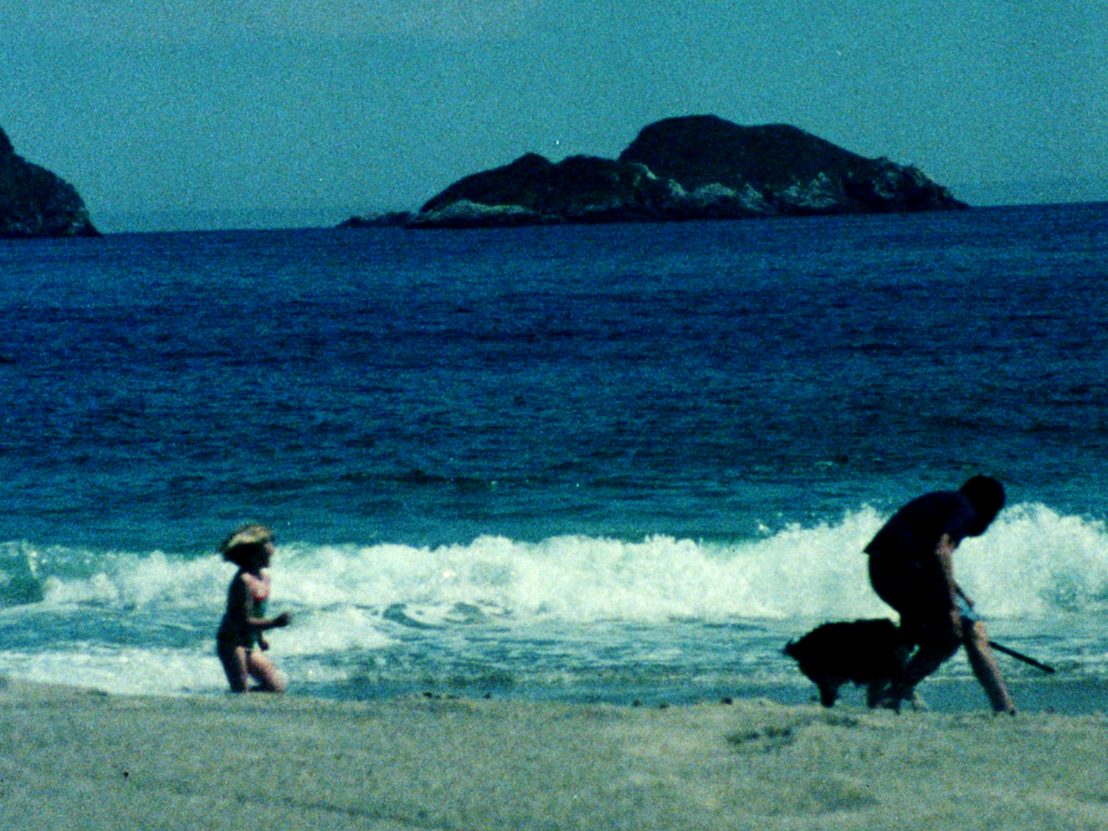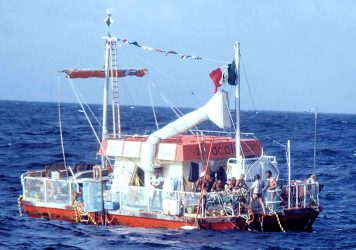
This year’s festival included a focus on films that challenge our perception of place and belonging.
“Art has taken a distinct ‘cartographic turn’ in the last century,” writes Catherine D’Ignazio in her essay ‘Art and Cartography’. “Artists have made maps, subverted maps, performed itineraries, imagined territories, contested borders, charted the invisible, and hacked physical, virtual and hybrid spaces.” This tradition of “artistic appropriation of cartographic strategies” may have informed the thinking behind the ‘Transmission, Imagined Territories’ focus at Lisbon’s DocLisboa, an intriguingly wide-reaching curated programme included in the festival’s most experimental section ‘New Visions’, comprising films with artistic map-making at their centre.
In two Taiwanese titles, various characters are seen setting off without a clear map. In Yao-Chi Chen’s The Mountain, three art students venture into the mountains of Hsinchu, Taiwan, talking dejectedly about the state of the nation they find themselves in, their lack of freedom and what nature offers them in its place. Chen’s Through the Years sees a journey of a different order, combining footage from Hollywood fiction films with documentary landscape material and mismatched audio to speak about America’s westward territorial expansion and its human cost on Chinese labourers.
Likewise, in Philip Hoffman’s great The Road Ended at the Beach, a group of men head west, not knowing where they might be going or what they want to achieve. Tracking three trips the filmmaker took with friends across Canada over a number of years, this delightfully deft, diaristic exercise explores the distance between expectation and reality, and between natural occurrence and manufactured memory. Beautifully photographed moments, captured in the instant of their enjoyment, are contrasted with retrospective recorded observations of relative disappointment, overlain as soundtrack. If anything, “the camera got in the way,” Hoffman ultimately concludes.
Another journey film, Dominic Gagnon’s Going South – the second in a planned tetralogy of ‘cameraless films’ plotting imagined geographies for each of the four cardinal directions – charts the “hacked physical, virtual and hybrid spaces” D’Ignazio mentions, mapping the post-internet age entirely from found sources. Compiled from a variety of vlogs, video oddities, computer generated images and video games, Gagnon’s world – packed with storm-chasers, gun-lobbyists, hypnotists, flat-earthers, paranoiacs and conspiratorialists – is a weird one, as strangely compelling a reflection of our virtual and actual worlds as any that could be imagined.
Equally odd is Rocío Barbenza’s Yasiree Trance, a border-breaking film that bridges various divides. For the first half, it’s a queer sci-fi odyssey, energetically and inventively charting a trans woman’s imagined journey towards a new life, arriving at an idyllic island with its own rules and rulers. Midway through it switches to a classic documentary mode, with droll narration detailing the real world reality behind the fantasy. The island is Apipé, a small territory split between Paraguay and Argentina that is dominated by a hydroelectric plant that provides power to both; and the woman is Malena, who lives an ordinary life there while dreaming of more. However wild the initial fictitious scenarios might have first seemed, by the end it is the real world variant that seems the most off. Barbenza imagines a utopia before collapsing it into reality.
Stranger still is the ‘cartographic turn’ seen in Antoni Collot’s Paul is Dead, a film that also visualises the imaginary in peculiar ways. The film’s title is also its first line, announced flatly by Brune, the wife of the recently deceased over the phone to an unseen interlocutor. This announcement initiates a series of events – imagined and actual, with no differentiation between the two – that depict her new life, post-Paul. Informed by a philosophical theory which features (“modal realism”, in which any possible world is deemed as real as this one) in the film, Paul is Dead takes slippery, surreal, and persistently sombre turns at will, mapping the “imagined territories” that a newly grieving mind can take.
In Pang-Chuan Huang’s slick short Return, the filmmaker makes a map through history, travelling on a train, cross-country and through-time, starting in his home in France before eventually arriving to his grandfather’s birthplace in Taiwan. Two contrasting image sets – one showing the black-and-white window views of his journey, the other slowly revealing the contours of a sepia-toned photograph – share cryptic narration that reveals the disguised premise of the film, the line that is being drawn between the two men and their shared past. Behind this innocuous photo is a squalid story, its power amplified by the trail traced to get to the truth of it.
Offering a different sort of historical trace, the territory covered by Kidlat Tahimik’s absurdist adventure Who Invented the Yoyo? Who Invented the Moon Buggy? is the most wide-reaching, seeing the filmmaker travel from the Philippines to Upper Bavaria, before setting out for space. In this inventive, unpredictable and continuously entertaining essay film, Tahimik plots paths that link the USA’s intergalactic exploits back to its earthly origins. America’s space race success is indebted to Filipino ingenuity, argues Tahimik, and the yo-yo, invented in the Philippines, lies behind it all. Looking to correct the record, he scrambles to become the first man to “play the yo-yo on the moon”, and claim for the Philippines its place in space spectacle history.
Abderrahmane Sissako’s sublime Life on Earth is a film that manages to cross continents within a straightforward scenario, a portrait of Mali at the turning point of the millennium. While on the radio the rest of the world enters a frenzy over the turn of this new era, in the small town of Sokolo, life carries on. Observing the ordinary with focus and finesse, Sissako depicts the town’s unhurried, rhythmic activity through crisp, economical imagery – each shot composed with clear consideration, with sequences creating contrasts – while interjecting muted reflections on the evolving relations between Europe and Africa, alongside pointed quotations from Aimé Césaire’s ‘Discourse on Colonialism’. A precise, poignant picture of post-colonial Africa is drawn. Complex cartographies can be plotted through the simplest setup.
For more on this year’s festival visit doclisboa.org
Published 5 Nov 2018

The producer of Born a Rebel speaks about the challenge of documenting more than a century of female protest.

A crop of complex and fascinating female characters were at the heart of this year’s LFF.

Marcus Lindeen’s documentary The Raft reunites the participants of a radical social study.